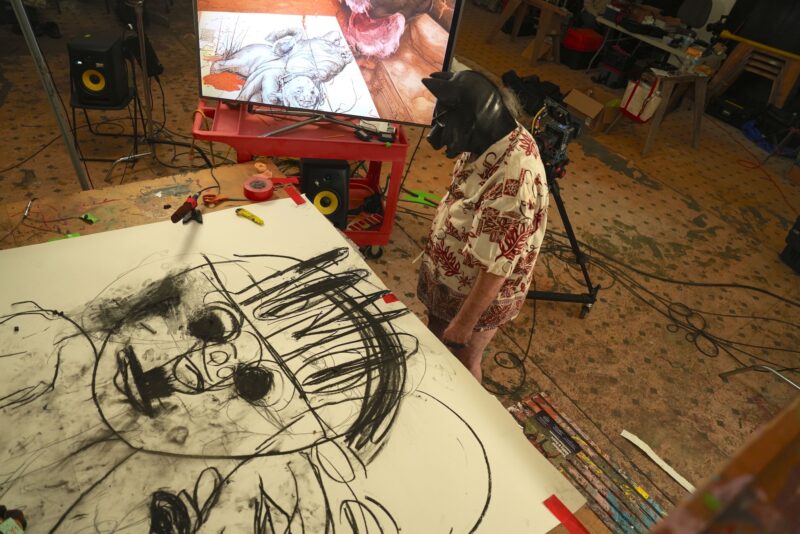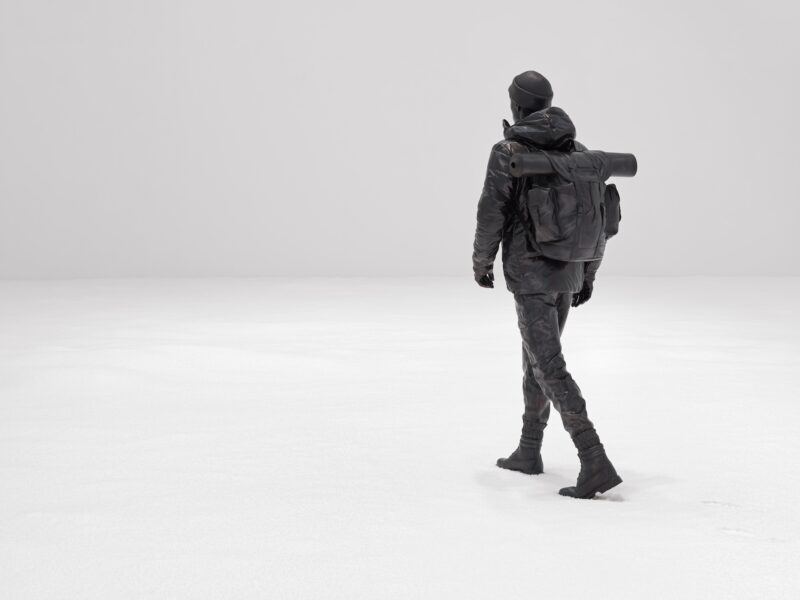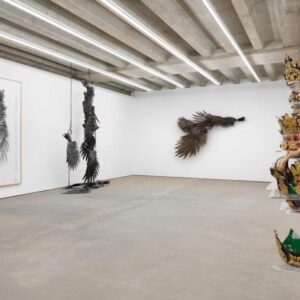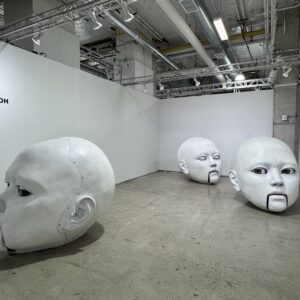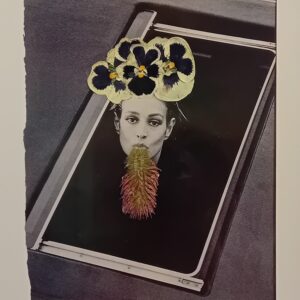
Paul McCarthy’s show at Galerie Max Hetzler goes from zero to one hundred (thousand). The exhibition is not for the faint of heart, but unlike irate audiences in Paris who shuddered at the site of an evocatively tapered Christmas tree, the Berlin public might be challenged for different reasons. Here the buttons McCarthy is pushing have less to do with rectums and more with autocrats. Either way, the notion of fetish is explored to the point of abstraction, dignity must become redefined, and the push-pull between debauchery and desire is a driving force.
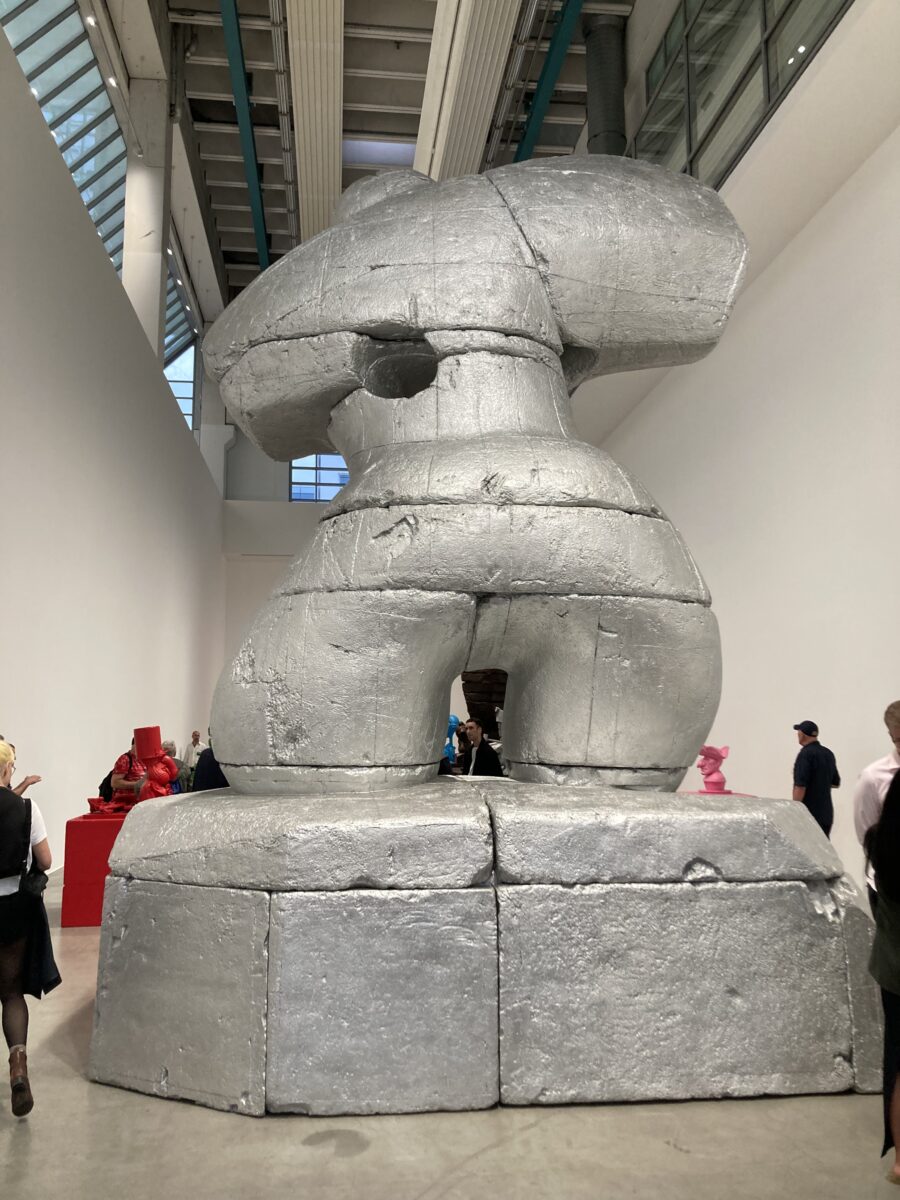
The spacious ground floor gallery is littered with CCFG, a collection of colourful, carbon fibre figurines. Smooth, flat surfaces contrast against the droopy wrinkled sacks, bulges, and protrusions that emerge from recognisable personas like Santa Clause, Michael Jackson, and, of course, the butt plugs. The statues range in colour from green to grey to pink, but it is a colossal red Santa with Buttplug that commands the room, towering over visitors at over 6 metres tall, his accompanying maquette in and amongst the crowd.
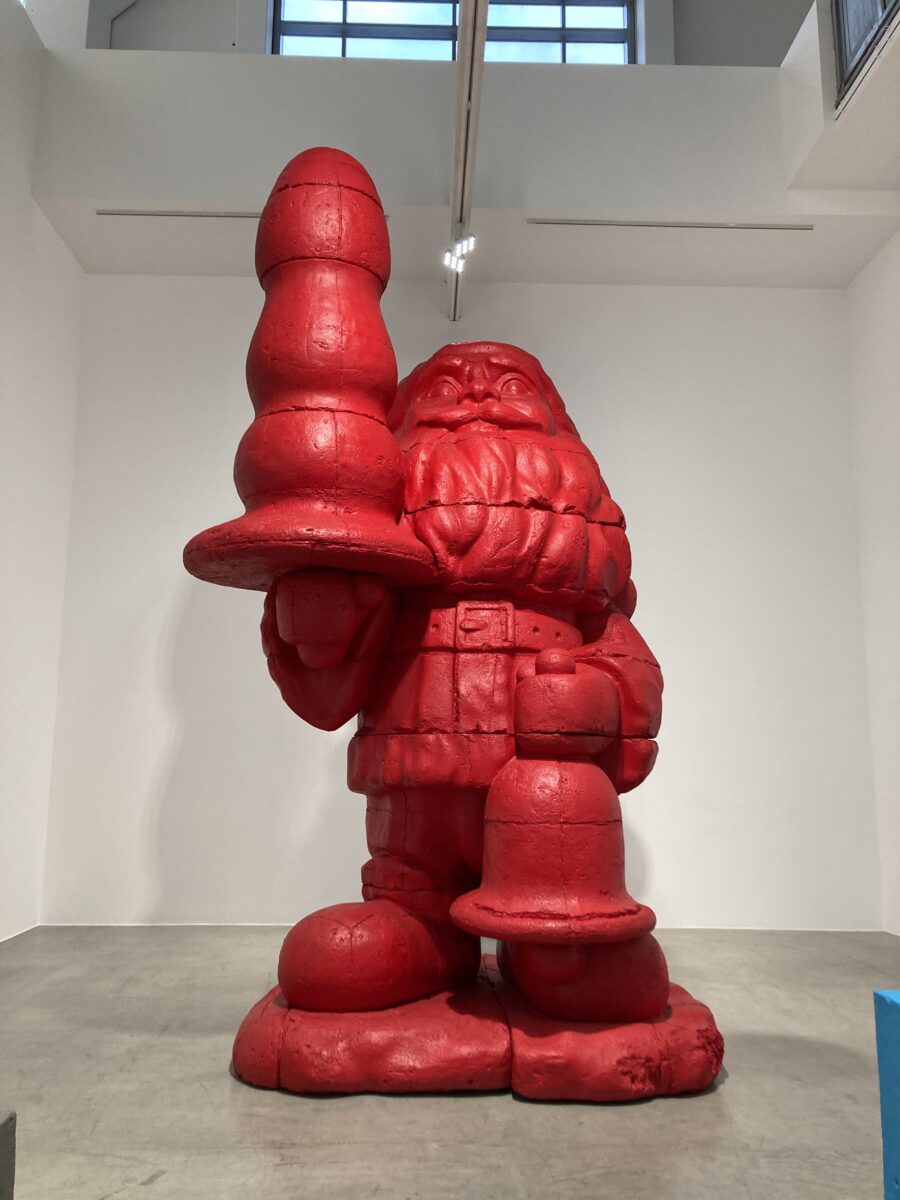
While it would be fair to assume that Berlin might be a fitting place for these kinds of deviant yet affable objects, any kind of implied reception invariably changes them. The tropes say that this city is home to leather daddies and nightclubbers, hence these objects would benefit from a presupposed embrace. However, the fact is that with or without Berlin, German society is already quite sexually liberated on its own – at least when it comes to socialising sex, talking about it, and intellectualising it.
Dildos and contraception are widely available in Germany; wholly de-stigmatised. I have seen sex toys for sale in the same pharmacy aisle as toothpaste, around the corner from the rice cakes. It’s just not a big deal. Hitler, however, very much still is a big deal. It’s only after ascending to the second level of the gallery and away from the court of primarily coloured fetish statues that the difficulty of McCarthy’s work becomes truly apparent.
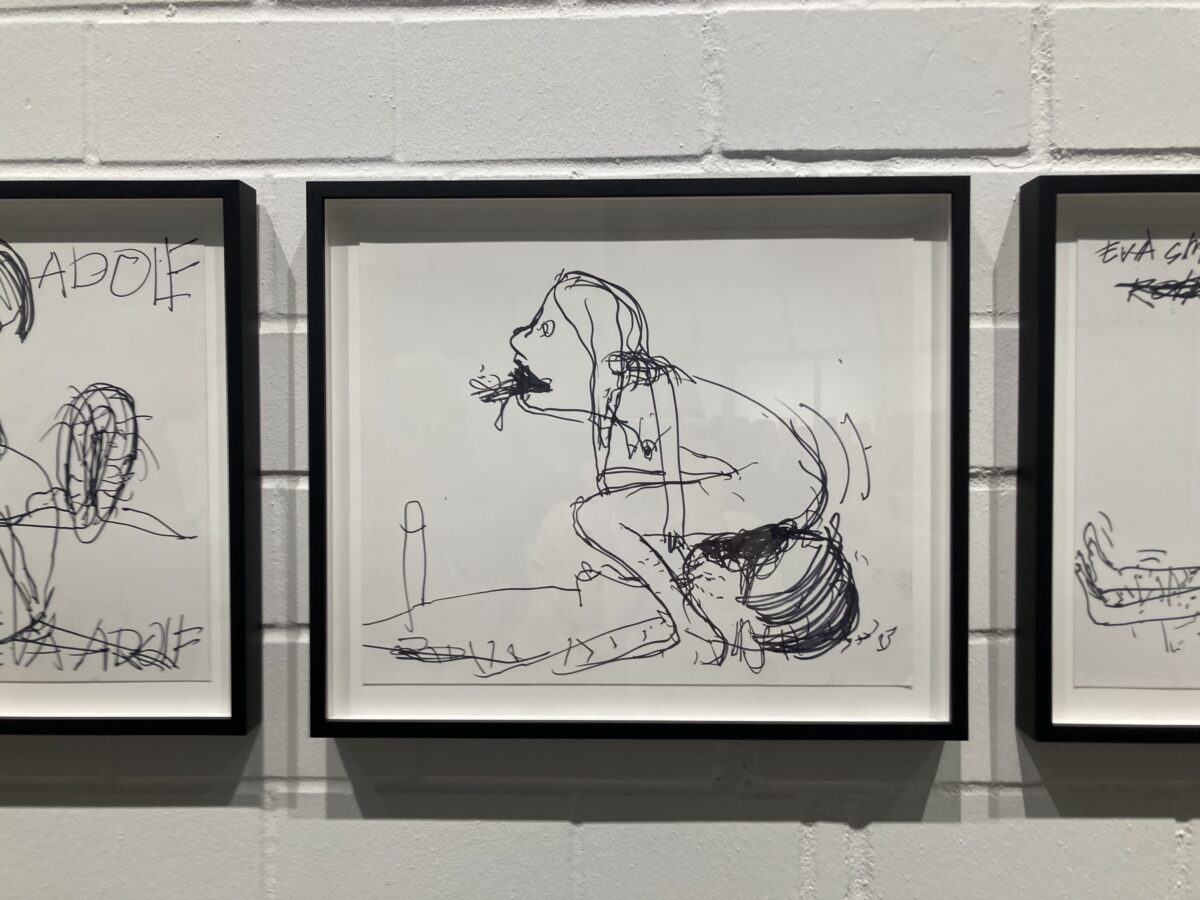

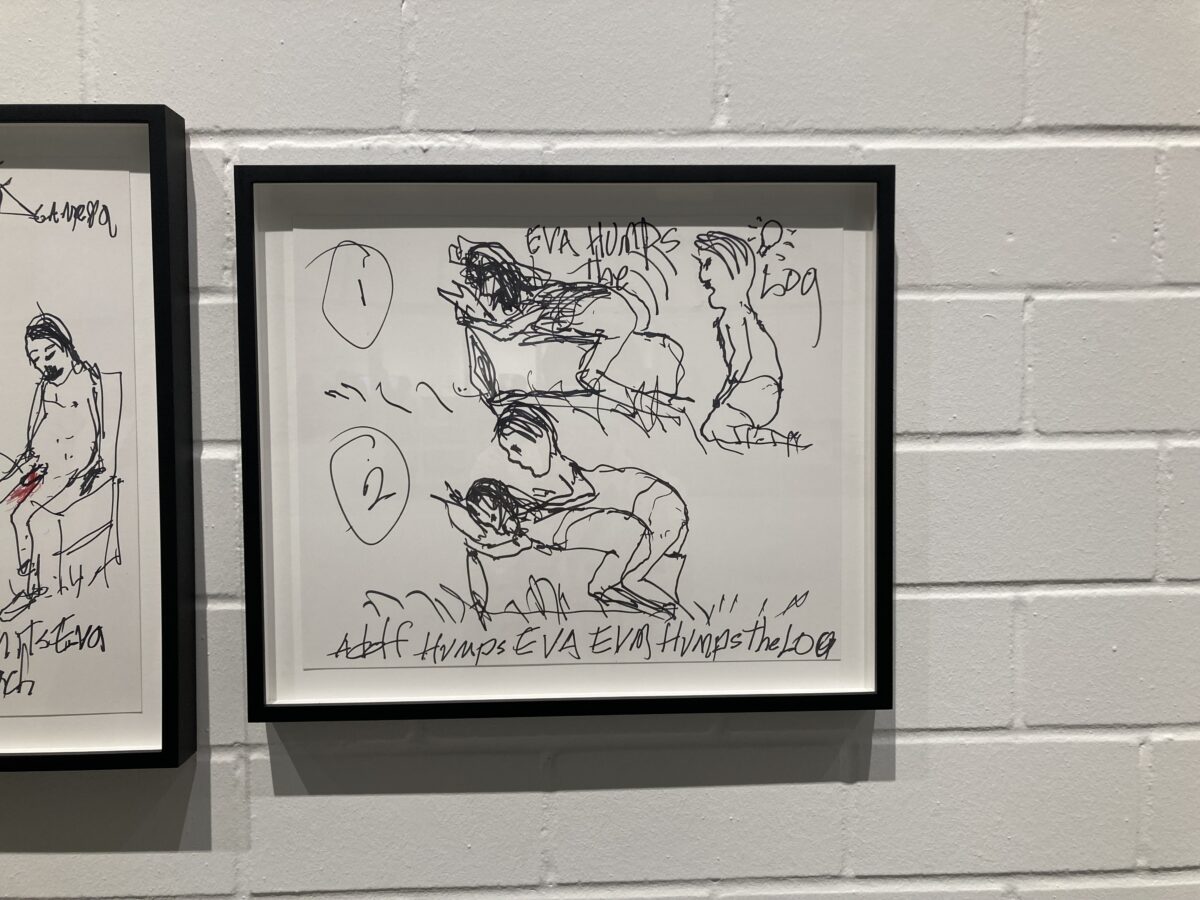
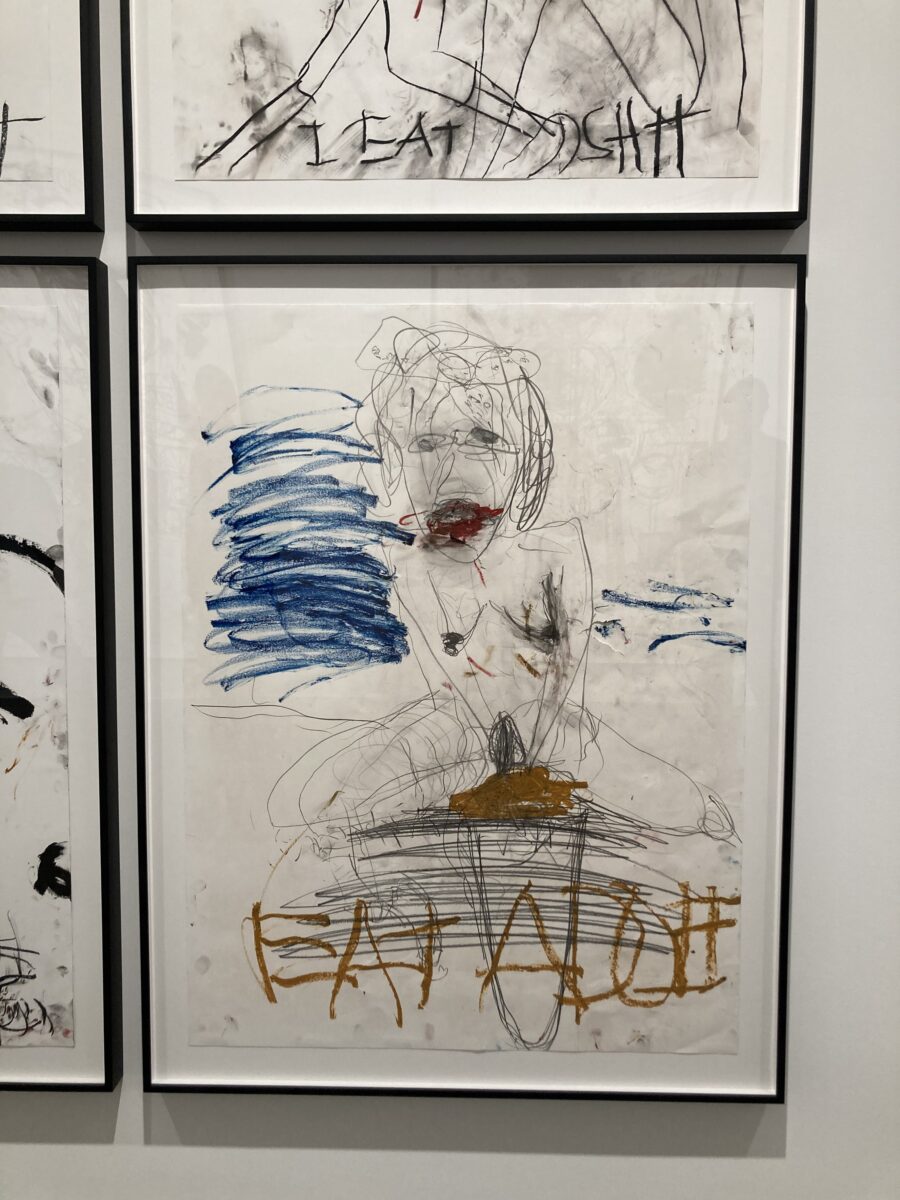
A collection of large, freehand drawings portray violently scribbled sketches of what is clearly Hitler, vulgar references to Eva, and sordid sexual fury. The drawings seem to have been created in craze: rushed, aroused, and bloodthirsty. Red is again the dominant colour.
The drawings have been inspired by improvised performances captured on video with German actress Lilith Strangenberg as part of the on-going project ‘A&E’, in which McCarthy and Strangenberg assume the alter egos of Adolf Hitler & Eva Braun, Adam & Eve, Arts & Entertainment, American and Europe. To say the works are hard to watch would be an understatement. Who wants to watch a blood-soaked, naked tyrant? Captions depict statements so absurdly lewd that it is satirical; and in this way the works successfully encapsulate the stunt behind McCarthy’s work: if you are offended, then you obviously just don’t “get it”.
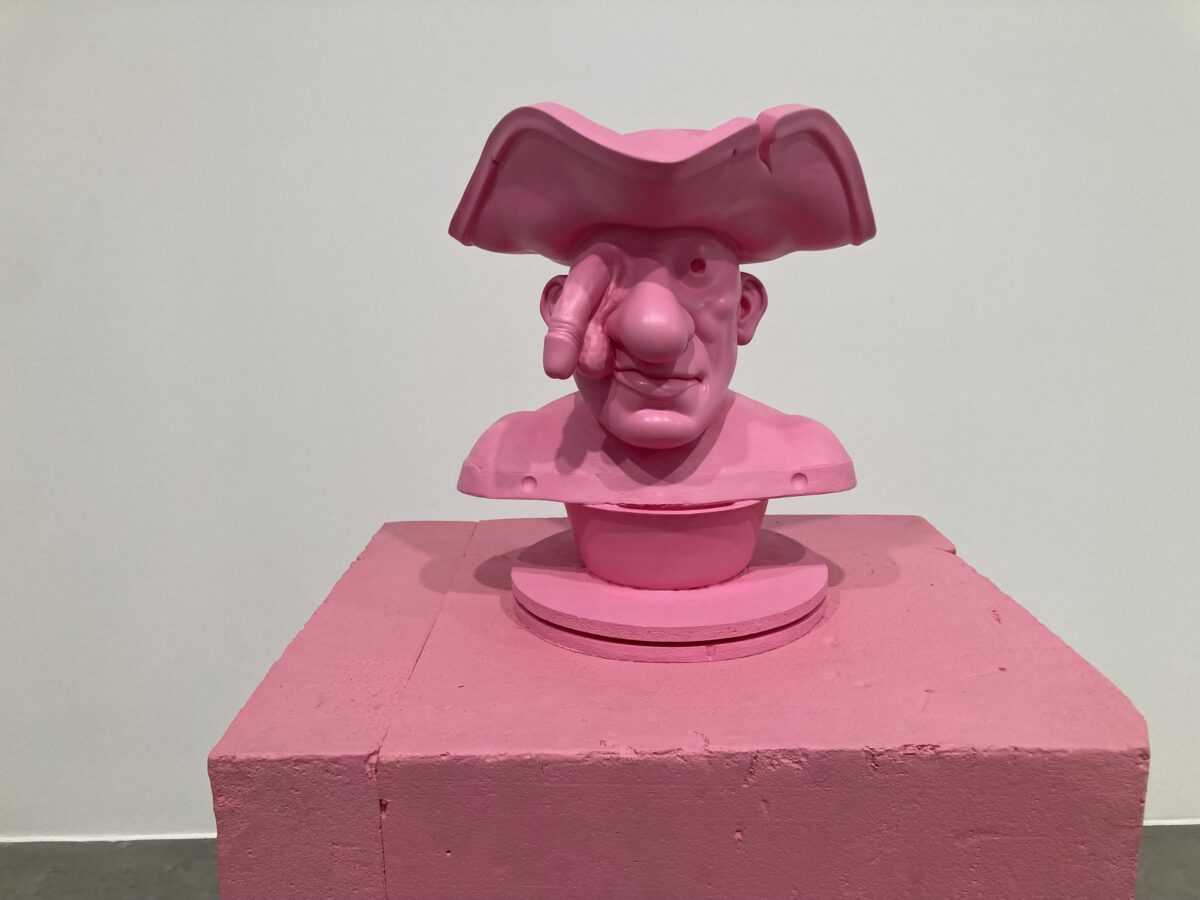
While many tokens of German culture fall victim to fetishisation, be they garden gnomes or alpine flowers, none are so residually problematic as Hitler. Never mind the fact that he wasn’t even German, his caricature is arguably the moment at which the line is drawn between what is farce and what is fault. The choice to portray him engages a psychological preoccupation that is severe, but somehow disarming.
What’s most intriguing about the exhibition is not the portrayal of violent sex, sexual objects, or raunchy behaviour, but rather how McCarthy’s overt violence is pointedly non-violent, his grotesqueness too outlandish – drawn out to the point of preposterous that it almost becomes whimsical. In this way we become wholly desensitised to the monstrosities of these strange and surrealist situations.
Arranged in an increasingly upsetting, progressively intimate layout, the exhibition plays with scale in a masterful way, taking advantage of the gallery’s unique architecture and monastic space. The colossal Santa can now be viewed from above, transforming him into a diminutive garden gnome and reinforcing the implicit object hood and distortion characteristic to McCarthy’s work. As the shift in perspective transforms the object, the viewer must also ask themselves how the definition of grotesque changes from place to place and time to time. What constitutes as unspeakable?
His work isn’t deviant, the world is deviant. And his objects and films are merely a mirror of the variated conventions of the globalised world and its symbols.
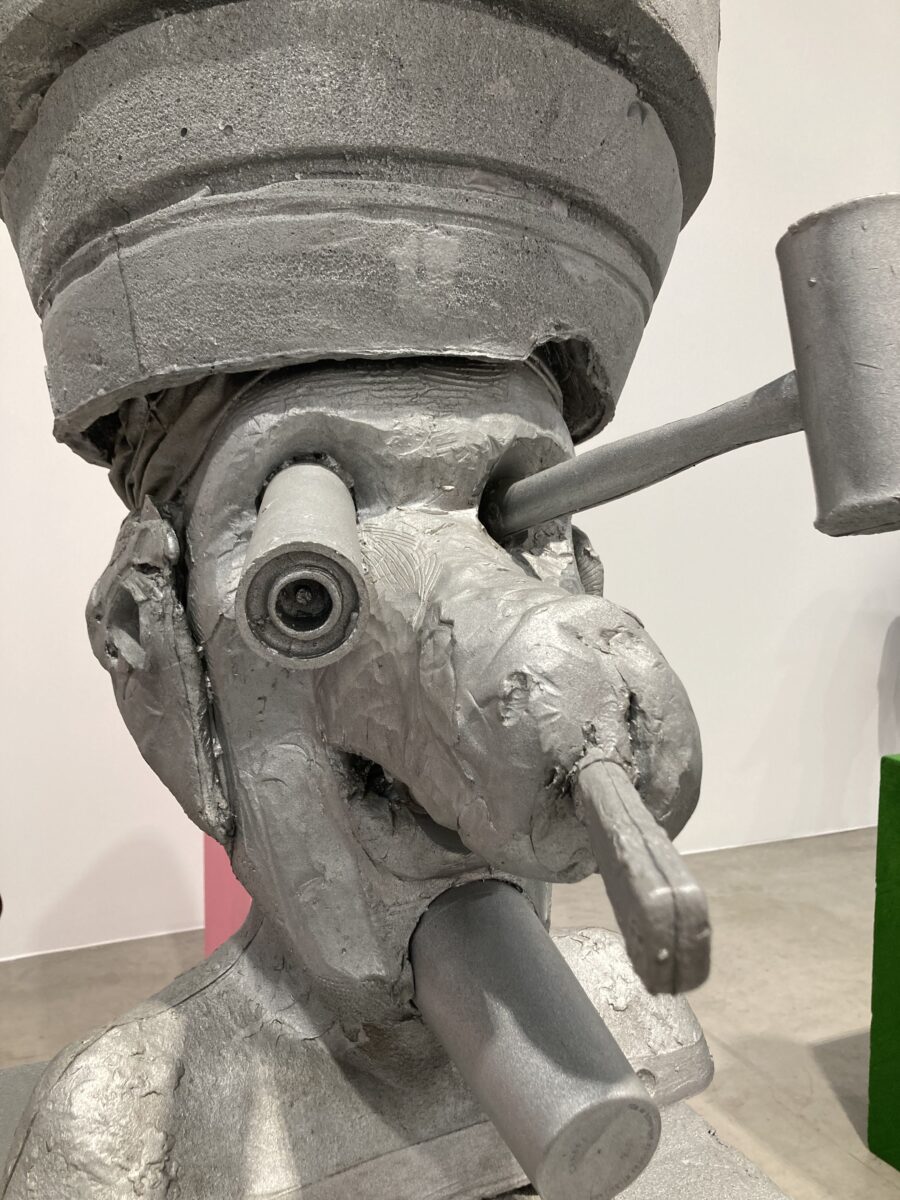
PAUL McCARTHY, Them as Was Is, organised by Cornelius Tittel, – 21st October 2023, Galerie Max Hetzler, Berlin: Potsdamer Straße 77-87

